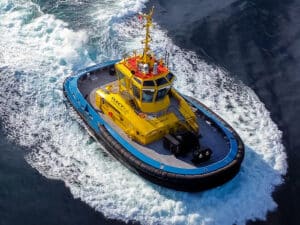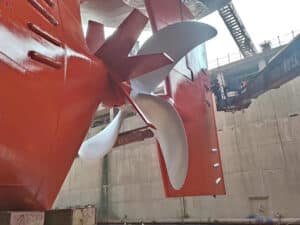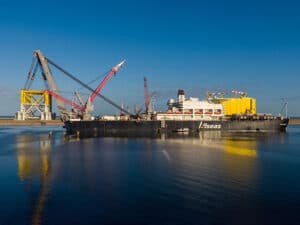
Op-Ed: A sea change
Written by Marine Log Staff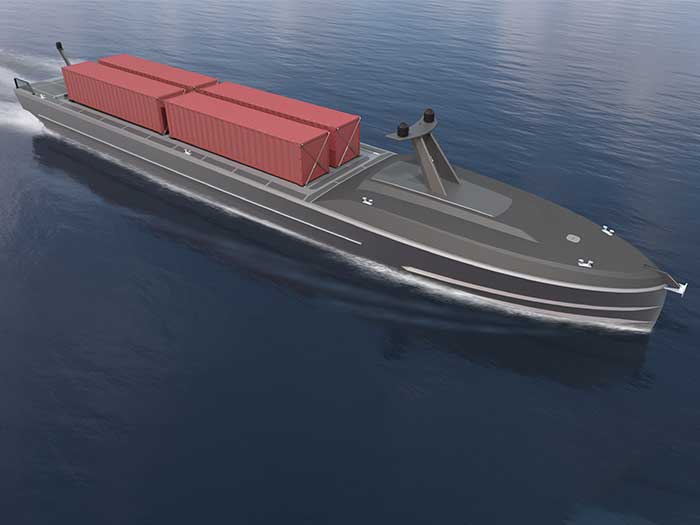
Will unmanned vessel use grow as a response to crew shortages? That's just one of the sea of changes envisaged by Scott Carrico
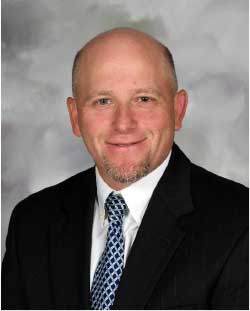
A sea change is coming to how we use the world’s oceans. This change is being spurred on by offshore markets which are experiencing unprecedented times. Multiple forces are at play causing the potential for significant changes in operations.
As this article is written, the U.S., as in other parts of the globe, is finally seeing signs that the COVID-19 pandemic could be coming to an end. If this is true, it is only natural to think about the future. What will normal look like going forward? Will it be a return to pre-pandemic ways or something different? Are there lessons to be learned on how technology can be used to improve the workplace? If so, then perhaps we are at the cusp of a fundamental shift. Perhaps something good will come from the pandemic.
Over the last two years, we have all learned how to work remotely. Most of us have turned our homes into offices. While this change was not easy, as a society we learned to cope and adjust. Technology helped keep us connected and allowed for virtual collaboration. While far from perfect, the potential for this type of engagement has been demonstrated. Another interesting development during this period was experienced by operators on the oceans. Offshore oil and gas (O&G), commercial shipping, fishing, and even naval circles struggled with workforce shortages and the availability of trained crew. Finding healthy and qualified personnel became paramount to business continuity efforts.
Unmanned vessels and normally unattended facilities could prove to be the best defense against future labor shortages. While not usually thought of as part of the value proposition for taking crew off, the inescapable thought is hard to disregard. What if these assets had the ability to not require as many or any sailors/operators? Technology demonstrators are starting to spring up in Northern Europe. The Yara Birkeland is providing autonomous coastal ferry service in Norway[1]. Equinor’s Krafla Field will incorporate an unmanned and remotely controlled processing platform in the North Sea[2]. There is active interest in pushing this technology to other regions. The normally unattended facility is a term becoming more common in O&G. The reasoning is sound, the challenge will be to maintain meaningful uptime and reliability without sacrificing safety and cost.
Another force for operational change is the development and experimentation of onboard robotics and drones. This technology has the promise to augment the capabilities of a minimally manned vessel or platform. By supplementing the crew with robotics and drones, the crew tasking can be decoupled from dull, dirty, and dangerous activities. Thanks to the variety of types (aerial, walker, crawlers, etc.) this technology is not limited to a particular section of a vessel or platform. Rather applications for remote survey and inspection, situational awareness, maintenance, and interventions can be found underwater, in the interior of the hull, and the exterior topsides or superstructure/mast.
The on-going digital transformation is also serving to cause change. One key advantage for companies who cross the digital divide is the ability to leverage their financial investment in a “digital twin” to enhance operations and maintenance activities. Smart operations and intelligent maintenance can become a reality when a digital twin is combined with technologies like mobile wearables and augmented reality. Together they can empower their crews and contribute to an increase in effectiveness. Providing the needed data and information (specifications in a manual, maintenance logs, performance trends, etc.) in real time to personnel onboard can dramatically reduce the duration of a task, saving time and money. In addition, the quality of crew training and the ability to refine procedures from a planning perspective can also be enhanced by employing this type of technology.
Taking the idea of smart operations and intelligent maintenance a step further is the development and implementation of Artificial Intelligence (AI). Progress is being demonstrated in offshore O&G. Floating production storage and offloading (FPSO) operators like SBM Offshore[3] and MODEC[4] are training AI models to help predict failures of critical onboard equipment and systems. Moving from an operational model of descriptive and diagnostic remote monitoring to one of predictive and prescriptive is the ultimate goal of smart operations and intelligent maintenance.
Another force of change is coming in the selection of fuels used to propel vessels. Ever-increasing awareness of emissions and subsequent mandates for carbon dioxide (CO2) and greenhouse gases are pushing operators to look at options for marine grade diesel. The International Marine Organization (IMO) wants to reduce carbon emissions by 50% in 2050[5]. While alternative fuels like liquefied natural gas (LNG), biodiesel, and methanol are available today, more options are on their way. In particular hydrogen and ammonia are being developed for commercial applications. The challenge in adopting any of these alternatives is not insignificant. Namely dealing with the energy densities. For instance, the amount of hydrogen required to propel a shipping vessel for transoceanic voyages would significantly impact the vessel’s cargo carrying capacity. These extended voyages might not be economical now, however, shorter coastal routes could be profitable.
Marine operators are working in a period of dramatic disruption to the status quo. The last two years have been a testament to that. Change is already happening and will bring unprecedented opportunities for owners and operators. However to realize the potential, it will take the cooperation of the entire community of designers, vendors, builders, operators, regulatory, and class societies. As an integrated design agent, Gibbs & Cox[6] has been working elements of this engineering challenge and seeks to collaborate with others to enable this sea change.
[1] https://www.yara.com/news-and-media/press-kits/yara-birkeland-press-kit/
[2] https://www.offshore-mag.com/field-development/article/14202269/abb-tasked-with-automation-at-north-sea-krafla-unmanned-processing-platform
[3] https://www.sbmoffshore.com/
[5] https://www.imo.org/en/MediaCentre/PressBriefings/pages/DecadeOfGHGAction.aspx
[6] https://www.gibbscox.com/

